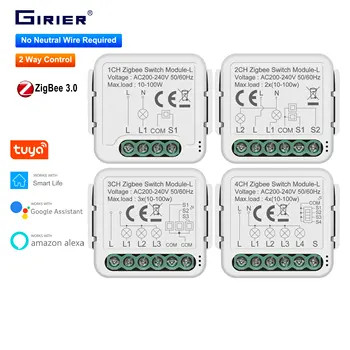Exploring Cognitive Recovery and Learning

Neurorehabilitation in Education: Supporting Cognitive Recovery and Learning Progress
Neurorehabilitation is a multidisciplinary approach aimed at promoting recovery and improving the quality of life for individuals with neurological and cognitive impairments.
When applied within the context of education, neurorehabilitation can play a crucial role in supporting cognitive recovery and facilitating learning progress for students facing challenges related to brain injury, neurodevelopmental disorders, or other neurological conditions.
In this comprehensive blog post, we will explore the intersection of neurorehabilitation and education, examining the strategies and methodologies employed to support cognitive recovery and foster academic success for students with neurological deficits.
Understanding Neurorehabilitation in the Educational Setting
In the sphere of education, neurorehabilitation takes on a particularly vital role in addressing the diverse cognitive, emotional, and behavioral needs of students who have experienced brain trauma, congenital neurological conditions, or developmental disorders such as autism spectrum disorders or ADHD.
Neurorehabilitation interventions encompass a wide array of therapeutic and educational approaches, with the overarching goal of enhancing cognitive functioning, promoting independent learning, and facilitating successful integration into educational environments.

Key Components of Neurorehabilitation in Education
1. Comprehensive Assessment and Individualized Planning: A foundational aspect of neurorehabilitation in education involves conducting thorough assessments of the student’s cognitive, sensory, and motor functioning.
These evaluations serve as the basis for developing personalized neurorehabilitation plans tailored to address the unique needs and challenges of each student.
2. Multidisciplinary Collaboration: Neurorehabilitation teams in educational settings typically consist of professionals from various disciplines, including neuropsychology, speech-language pathology, occupational therapy, physical therapy, and special education.
This collaborative approach ensures that the student’s cognitive and learning needs are addressed holistically, considering the complex interplay of neurological, sensory, and academic factors.
3. Cognitive Training and Remediation: Cognitive rehabilitation techniques are utilized to target specific cognitive deficits, such as attention, memory, executive functioning, and problem-solving skills.
Through targeted interventions and strategies, students can experience improvements in their cognitive abilities, ultimately enhancing their capacity to engage in meaningful learning experiences.
4. Assistive Technology and Adaptive Learning Tools: The integration of assistive technology and adaptive learning tools serves as a fundamental component of neurorehabilitation in education.
These resources can empower students with neurological impairments to access curriculum materials, participate in classroom activities, and express their knowledge and creativity using alternative modalities.
5. Social-Emotional Support and Behavioral Interventions: Neurorehabilitation in education extends beyond cognitive domains to address the social and emotional well-being of students.
By providing social skills training, emotional regulation support, and behavioral interventions, educators and neurorehabilitation professionals can create a supportive environment conducive to learning and social integration.
The Impact of Neurorehabilitation on Learning Progress
The successful implementation of neurorehabilitation strategies within educational settings can yield profound benefits for students with neurological challenges.
By addressing cognitive impairments and providing tailored support, neurorehabilitation creates opportunities for these students to make meaningful strides in their academic progress.
Additionally, the holistic nature of neurorehabilitation interventions fosters a more inclusive and supportive learning environment, promoting equity and access to educational opportunities for all students.

Challenges and Continued Advancements
While neurorehabilitation in education holds great promise, it is not without its challenges. Limited access to specialized neurorehabilitation services, ongoing professional development for educators, and the need for greater awareness and advocacy for students with neurological impairments are areas that warrant ongoing attention and improvement.
Furthermore, advancements in technology, neuroscience, and educational research continue to drive innovation in the field of neurorehabilitation.
From virtual reality-based cognitive training programs to personalized educational interventions informed by neuroscientific evidence, the landscape of neurorehabilitation in education is evolving, offering new avenues for supporting cognitive recovery and learning progress.
Conclusion
Neurorehabilitation in education represents a symbiotic partnership between the fields of neuroscience, rehabilitation, and education, with the shared objective of promoting optimal experiences for students with neurological impairments.
By embracing a multidisciplinary, individualized, and holistic approach, educators and neurorehabilitation professionals can serve as catalysts for transformative change, ensuring that all students have the opportunity to thrive academically and holistically, regardless of their neurological challenges.
As research and practice continue to converge, the potential for positive outcomes and enhanced educational equity through neurorehabilitation remains a beacon of hope for the future of inclusive education.
Brain’s Language Processing through Reading
Exploring Scholarship in Sweden
Educational Scholarship Trends in Ireland
Neurodiversity in the Workplace: Fostering Inclusivity and Accommodations for Diverse Brains
Parenting the Developing Brain: Nurturing Cognitive Growth in Early Childhood
Workable Hacks to Money Saving for College Students
Workable Hacks to Money Saving for College Students
Popularity Newest Price: low to high Discount



























Leave a comment